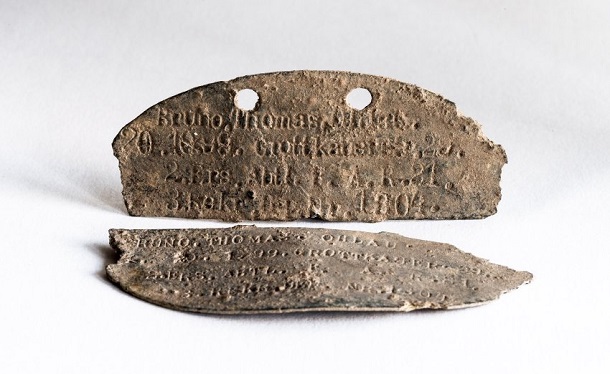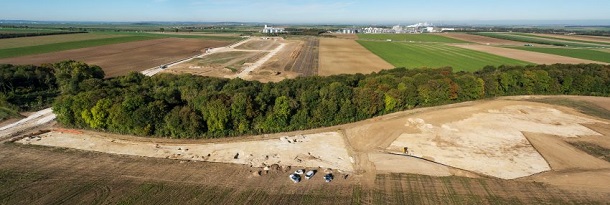French archaeologists came the surprise: During a routine excavation they found the remains of a large German military camp of the First World War.
Actually investigated the excavators of the French National Archaeology Institute INRAP for traces from the Iron Age and the Roman Empire. On the site in Isles-sur-Suippe near the French city of Reims, to be the industrial area soon, expected the usual: some Roman houses or perhaps a Gallic homestead. Instead, they found the remains of a large German military camp of the First World War.
What released the Earth corresponds well to the German taste in interior design at the beginning of the 20th century. A stuffed bear head, the excavators found, even with teeth – probably the memory of a past long hunting trip, prepared as a hearth-rug. In addition, the statue of a Great Dane, the fashion dog par excellence, since Otto von Bismarck in 1878 his two “Reich dogs” taken even with the Congress of Berlin (where Dane Tyras Russian Foreign Minister Gorchakov the tattered pants). But the Wilhelmine Deco was not about the hunting lodge of a Prussian nobleman, but under the carcass of a horse next to the huts of a military camp.
The area in which lay the camp was, throughout the war in German hands: a strategic place in the immediate vicinity of an old railway line. From here, supplies, weapons and soldiers could be easily and quickly transported to the front. At the same time many weary soldiers came back: On average, the German army indulged their husbands every three weeks a break from life in the trenches. In recessed camps such as the Isles-sur-Suippe, at a safe distance from the fighting, they were allowed to recover for a short time before they had to return to the front. At the same time, the camp served as a training camp for recruits and as a logistics center for development, enhancement and protection of supply lines.
First World War Archaelogy:Ammunition, bottles and toothbrushes
Four 13-meter-long block houses have been found by archaeologists on the 4.5 acre site and one of them investigated. The floor was covered with wood planks, stairs leading to the first floor. Probably slept in this apartment about 24 men. The excavators discovered here four magazines with French cartridges from the year 1916. “This type of ammunition is typically used for the defense of the rear lines,” they wrote in a press release. “The younger and more effective German weapons systems were reserved for use at the forefront.”
Who were the soldiers who were trained here and only later in the pauses between combat roles tended their wounds? Excavators found the traces of their camp life, including wine, water and medicine bottles. Often there was to eat fresh meat – the bone with knife marks of slaughter also landed in the waste pits like empty cans. Eaten by soldiers of both dishes brought from Bavaria and of French dishes. Only the supervisor, were among the bearskin and Dogg statue, ate distinguished: In the pit with his personal belongings be fine dinner service was.
Your time spent Front tourists trying to repair their equipment: Replace gas mask filters, mending helmets, shoes resoled. A technically skilled soldier forged from a grenade sleeve an ashtray. And for anything else found the soldiers finally time what had been neglected in the weeks in the trenches: the personal care. Between munitions and military equipment, the excavators discovered lacked at the front tooth and hair brushes.
[adrotate group=”14″]


